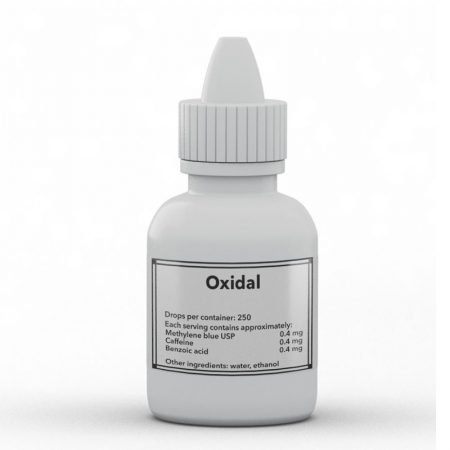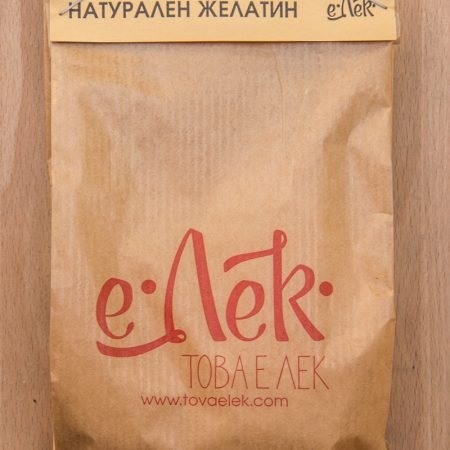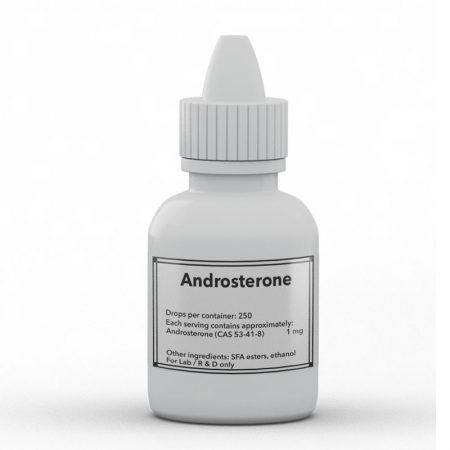Храни като сьомгата, лененото семе и орехите
се смятат за изключително полезни за здравето, тъй като съдържат благотворни за
сърцето Омега-3 мазнини, които се смятат че имат позитивно въздействие при
заболявания като диабет, рак и сърдечно-съдови заболявания. Тези твърдения се
подплатяват и с абсурдните твърдения, че подсилват имунитета, подобряват
паметта и че имат ефект против стареене.
Но Омега-3 нямат всички тези ефекти и ползи, които се твърди, че притежават. Открито е, че не предпазват от сърдечни заболявания и инфаркт (1, 2, 3, 4, 5) , рак (4, 5) , дегенерация на макулата (6), възпалителни болести на червата (7) , стареене (8) , деменция, Алцхаймер и други неврологични разстройства (9, 10).
Даже напротив, Омега-3 по-скоро допринасят за
тези заболявания.
Омега-6 мазнините се намират най-често в
растителните масла, ядките и семената и се промотират като здравословен
заместител на запушващите кръвоносните съдове наситени мазнини. Все по-добре
изследвани напоследък, Омега-6, смятани за полезни за сърцето, са всъщност са
вредни за здравето.
Омега-3 мазнините се срещат в рибите, лененото
семе, чията, орехите и в някои други храни. Напоследък те са по-популярни от
Омега-6, като сега играят ролята на техен здравословен заместител.
Омега-3 притежават повече двойни връзки от
омега-6, което ги прави дори още по-малко стабилни. Те са структурно по-слаби и
около два пъти по-податливи на увреждане от омега-6 мазнините.
Например, докозахексаенова киселина е една от омега-3 мазнините, която се смята за изключително полезна. Количеството на докозахексаенова киселина (DHA), която се оползотворява структурно в нашите клетки е директно свързвана със стареенето и продължителността на живота (11) . С други думи, колкото повече DHA има в нашите клетки, толкова по-бързо стареем и толкова по-кратък е животът ни.
Това се дължи на фактът, че DHA е една от най-слабите и най-малко стабилни мазнини. Когато се използва като структурен компонент на митохондрията, тя повишава изпускането на енергия от клетката много повече от всяка една друга полиненаситена мазнина (12). Също така, докозахексаеновата киселина е 320 пъти по-податлива на увреждане от мононенаситените мазнини! (11)
Тези съставки увреждат протеините в ДНК, включително и клетъчните компоненти, необходими за производството на енергия (4, 13, 14, 15, 16) . Тези съединения са свързани със заболявания като рак, диабет, сърдечни и чернодробни заболявания, Алцхаймер, стареенето и са известни невротоксини (16, 17, 18, 19, 20).
Възможно е да се спори, че приемането на тези полиненаситени мазнини не означава задължително, че ще се разболеем. Но много изследвания доказват, че повишеното приемане на омега-3 (както и по принцип на всички PUFA) повишават липидната пероксидация и присъствието на вредните субстанции от техния разпад (21, 22, 23, 24, 25, 26, 27, 28, 29).
Заради вредното влияние на омега-3 мазнините и техните деривати, те се установяват като участници в развиването на рак (30, 31, 32, 33) , затлъстял черен дроб (34, 35, 36), и инсулинова резистентност (37, 38). Също така, както и омега-6, те са силно имуносупресивни (39, 40, 41).
Омега-3 мазнините понастоящем се препоръчват за прием при бременност и в ранна детска възраст. Доказано е обаче тяхното влияние върху намаляване продължителността на живота, увеличаване на телесното тегло и неврологични отклонения при деца, чиито майки са консумирали големи количества от тях (42).
1.Aung, Theingi, et al. “Associations of
Omega-3 Fatty Acid Supplement Use With Cardiovascular Disease Risks:
Meta-analysis of 10 Trials Involving 77 917 Individuals.” JAMA cardiology, 3, no. 3, 2018, pp. 225–34.
doi:10.1001/jamacardio.2017.5205.
2.Rizos, Evangelos C., et al. “Association
between omega-3 fatty acid supplementation and risk of major cardiovascular
disease events: A systematic review and meta-analysis.” JAMA, 308, no. 10, 2012, pp. 1024–33.
doi:10.1001/2012.jama.11374.
3.Fodor, J. George, et al. “”Fishing” for the
origins of the “Eskimos and heart disease” story: Facts or wishful thinking?”
The Canadian journal of cardiology, 30,
no. 8, 2014, pp. 864–68. doi:10.1016/j.cjca.2014.04.007.
4.Peskin, B. S. “Why fish oil fails: A
comprehensive 21st century lipids-based physiologic analysis.” Journal of
lipids, 2014, 2014, p. 495761.
doi:10.1155/2014/495761.
5.Hooper, L., et al. “Omega 3 fatty acids for
prevention and treatment of cardiovascular disease.” The Cochrane database of
systematic reviews, no. 4, 2004, CD003177. doi:10.1002/14651858.CD003177.pub2.
6.Lawrenson, John G., and Jennifer R. Evans.
“Omega 3 fatty acids for preventing or slowing the progression of age-related
macular degeneration.” The Cochrane database of systematic reviews, no. 4,
2015, CD010015. doi:10.1002/14651858.CD010015.pub3.
7.Cabré, Eduard, et al. “Omega-3 fatty acids
and inflammatory bowel diseases – a systematic review.” The British journal of
nutrition, 107 Suppl 2, 2012, S240-52. doi:10.1017/S0007114512001626.
8.Magalhães, João Pedro de, et al. “Fish oil
supplements, longevity and aging.” Aging,
8, no. 8, 2016, pp. 1578–82. doi:10.18632/aging.101021.
9.Burckhardt, Marion, et al. “Omega-3 fatty
acids for the treatment of dementia.” The Cochrane database of systematic
reviews, 4, 2016, CD009002.
doi:10.1002/14651858.CD009002.pub3.
10.Assisi, Alessandro, et al. “Fish oil and
mental health: The role of n-3 long-chain polyunsaturated fatty acids in
cognitive development and neurological disorders.” International clinical
psychopharmacology, 21, no. 6, 2006, pp.
319–36. doi:10.1097/01.yic.0000224790.98534.11.
11.Hulbert, A. J. “On the importance of fatty
acid composition of membranes for aging.” Journal of theoretical biology, 234, no. 2, 2005, pp. 277–88.
doi:10.1016/j.jtbi.2004.11.024.
12.Hulbert, A. J., et al. “How might you
compare mitochondria from different tissues and different species?” Journal of comparative
physiology. B, Biochemical, systemic, and environmental physiology, 176, no. 2, 2006, pp. 93–105.
doi:10.1007/s00360-005-0025-z.
13.Marnett, L. “Endogenous DNA damage and
mutation.” Trends in Genetics, 17, no.
4, 2001, pp. 214–21. doi:10.1016/S0168-9525(01)02239-9.
14.Niedernhofer, Laura J., et al.
“Malondialdehyde, a product of lipid peroxidation, is mutagenic in human
cells.” The Journal of biological chemistry,
278, no. 33, 2003, pp. 31426–33. doi:10.1074/jbc.M212549200.
15.Musatov, Andrej. “Contribution of
peroxidized cardiolipin to inactivation of bovine heart cytochrome c oxidase.”
Free radical biology & medicine, 41,
no. 2, 2006, pp. 238–46. doi:10.1016/j.freeradbiomed.2006.03.018.
16.Del Rio, Daniele, et al. “A review of
recent studies on malondialdehyde as toxic molecule and biological marker of
oxidative stress.” Nutrition, metabolism, and cardiovascular diseases:
NMCD, 15, no. 4, 2005, pp. 316–28.
doi:10.1016/j.numecd.2005.05.003.
17.Pocernich, Chava B., and D. Allan
Butterfield. “Acrolein inhibits NADH-linked mitochondrial enzyme activity:
Implications for Alzheimer’s disease.” Neurotoxicity research, 5, no. 7, 2003, pp. 515–20.
18.Butterfield, D. Allan, et al. “Evidence
that amyloid beta-peptide-induced lipid peroxidation and its sequelae in
Alzheimer’s disease brain contribute to neuronal death.” Neurobiology of
aging, 23, no. 5, 2002, pp. 655–64.
19.Reed, Tanea, et al. “Redox proteomic
identification of 4-hydroxy-2-nonenal-modified brain proteins in amnestic mild
cognitive impairment: Insight into the role of lipid peroxidation in the
progression and pathogenesis of Alzheimer’s disease.” Neurobiology of
disease, 30, no. 1, 2008, pp. 107–20.
doi:10.1016/j.nbd.2007.12.007.
20.Roberts, L. J., et al. “Formation of
isoprostane-like compounds (neuroprostanes) in vivo from docosahexaenoic acid.”
The Journal of biological chemistry,
273, no. 22, 1998, pp. 13605–12.
21.Allard, J. P., et al. “Lipid peroxidation
during n-3 fatty acid and vitamin E supplementation in humans.” Lipids, 32, no. 5, 1997, pp. 535–41.
22.Filaire, Edith, et al. “Effect of 6 Weeks
of n-3 fatty-acid supplementation on oxidative stress in Judo athletes.”
International journal of sport nutrition and exercise metabolism, 20, no. 6, 2010, pp. 496–506.
23.Song, J. H., and T. Miyazawa. “Enhanced
level of n-3 fatty acid in membrane phospholipids induces lipid peroxidation in
rats fed dietary docosahexaenoic acid oil.” Atherosclerosis, 155, no. 1, 2001, pp. 9–18.
24.Al-Gubory, Kaïs H. “Mitochondria: Omega-3
in the route of mitochondrial reactive oxygen species.” The international
journal of biochemistry & cell biology,
44, no. 9, 2012, pp. 1569–73. doi:10.1016/j.biocel.2012.06.003.
25.Malis, C. D., et al. “Incorporation of
marine lipids into mitochondrial membranes increases susceptibility to damage
by calcium and reactive oxygen species: Evidence for enhanced activation of
phospholipase A2 in mitochondria enriched with n-3 fatty acids.” Proceedings of
the National Academy of Sciences of the United States of America, 87, no. 22, 1990, pp. 8845–49.
26.Gonzalez, M. J., et al. “Lipid peroxidation
products are elevated in fish oil diets even in the presence of added
antioxidants.” The Journal of nutrition,
122, no. 11, 1992, pp. 2190–95. doi:10.1093/jn/122.11.2190.
27.Kjaer, M. A., et al. “Dietary n-3 HUFA
affects mitochondrial fatty acid beta-oxidation capacity and susceptibility to
oxidative stress in Atlantic salmon.” Lipids,
43, no. 9, 2008, pp. 813–27. doi:10.1007/s11745-008-3208-z.
28.Diniz, Yeda Sant’Ana, et al. “Diets rich in
saturated and polyunsaturated fatty acids: Metabolic shifting and cardiac
health.” Nutrition (Burbank, Los Angeles County, Calif.), 20, no. 2, 2004, pp. 230–34.
doi:10.1016/j.nut.2003.10.012.
29.Fang, J. L., et al. “Determination of DNA
adducts of malonaldehyde in humans: Effects of dietary fatty acid composition.”
Carcinogenesis, 17, no. 5, 1996, pp.
1035–40.
30.Griffini, P., et al. “Dietary omega-3
polyunsaturated fatty acids promote colon carcinoma metastasis in rat liver.”
Cancer research, 58, no. 15, 1998, pp.
3312–19.
31.Sasaki, T., et al. “Effects of dietary
n-3-to-n-6 polyunsaturated fatty acid ratio on mammary carcinogenesis in rats.”
Nutrition and cancer, 30, no. 2, 1998,
pp. 137–43. doi:10.1080/01635589809514653.
32.Brasky, Theodore M., et al. “Plasma
phospholipid fatty acids and prostate cancer risk in the SELECT trial.” Journal
of the National Cancer Institute, 105,
no. 15, 2013, pp. 1132–41. doi:10.1093/jnci/djt174.
33.Brasky, Theodore M., et al. “Serum
phospholipid fatty acids and prostate cancer risk: Results from the prostate
cancer prevention trial.” American journal of epidemiology, 173, no. 12, 2011, pp. 1429–39.
doi:10.1093/aje/kwr027.
34.Varela-Lopez, Alfonso, et al. “Gene
pathways associated with mitochondrial function, oxidative stress and telomere
length are differentially expressed in the liver of rats fed lifelong on virgin
olive, sunflower or fish oils.” The Journal of nutritional biochemistry, 52, 2018, pp. 36–44. doi:10.1016/j.jnutbio.2017.09.007.
35.Nanji, A. A., et al. “Dietary saturated
fatty acids: A novel treatment for alcoholic liver disease.”
Gastroenterology, 109, no. 2, 1995, pp.
547–54.
36.Nanji, A. A., et al. “Dietary saturated
fatty acids down-regulate cyclooxygenase-2 and tumor necrosis factor alfa and reverse
fibrosis in alcohol-induced liver disease in the rat.” Hepatology (Baltimore,
Md.), 26, no. 6, 1997, pp. 1538–45.
doi:10.1002/hep.510260622.
37.Borkman, M., et al. “Effects of fish oil
supplementation on glucose and lipid metabolism in NIDDM.” Diabetes, 38, no. 10, 1989, pp. 1314–19.
38.Vessby, B., and M. Boberg. “Dietary
supplementation with n-3 fatty acids may impair glucose homeostasis in patients
with non-insulin-dependent diabetes mellitus.” Journal of internal
medicine, 228, no. 2, 1990, pp. 165–71.
39.Haw, M. P., et al. “The effect of dietary
polyunsaturated fatty acids (PUFA) on acute rejection and cardiac allograft
blood flow in rats.” Transplantation,
60, no. 6, 1995, pp. 570–77.
40.Virella, G., et al. “Immunosuppressive
effects of fish oil in normal human volunteers: Correlation with the in vitro
effects of eicosapentanoic acid on human lymphocytes.” Clinical immunology and
immunopathology, 61, 2 Pt 1, 1991, pp.
161–76.
41.Bechoua, Shaliha, et al. “Influence of very
low dietary intake of marine oil on some functional aspects of immune cells in
healthy elderly people.” The British journal of nutrition, 89, no. 4, 2003, pp. 523–31.
doi:10.1079/BJN2002805.
42.Church, M. W., et al. “Excess omega-3 fatty
acid consumption by mothers during pregnancy and lactation caused shorter life
span and abnormal ABRs in old adult offspring.” Neurotoxicology and teratology,
vol. 32, no. 2, 2010, pp. 171–81. doi:10.1016/j.ntt.2009.09.006.











